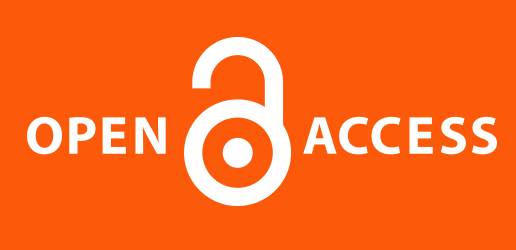
Research on the Path Innovation and Evaluation System Construction of Integrating Labor Education into Student Management in Colleges and Universities in the New Era
摘要
Under the guidance of the education goals in the new era, the integration of labor education into student management in colleges and universities has become a key path to optimize management mechanisms and improve the effectiveness of education. On the basis of sorting out the policy orientation and theoretical basis, the article analyzes the current problems of labor education in colleges and universities such as loose systems, low willingness to participate, and lack of evaluation, and proposes the construction of a “curriculum— management —service” integration mechanism, a labor-oriented management system, and a multi-subject collaborative system. The feasibility and effectiveness of the reform path were verified by designing an evaluation system covering the three dimensions of objectives, processes and results, combined with empirical data from the case universities. The results of the research show that this integration model can effectively enhance students' labor awareness, behavioral norms and management satisfaction, and has practical promotion value.Introduction
In the context of the new era, labor education has been given educational value and strategic height.》 Policies such as the "Opinions on Comprehensively Strengthening Labor Education in Universities, Middle Schools and Primary Schools in the New Era" clearly require that labor education run through the entire process of talent training and serve as an important measure of educational effectiveness. As an important place for training high-quality talents, colleges and universities should take the initiative to assume the responsibility of labor education and strengthen their functions in value leadership and personality shaping. In reality, however, the integration of labour education and student management is still insufficient. On the one hand, labour education generally shows a tendency to be task-oriented and short-term, lacking institutional support and scientific evaluation and becoming a mere formality; on the other hand, the student management system focuses on many matters and fails to include labour education in the main line of management. Some colleges and universities still regard labour education as a complementary content and ignore its synergistic value with moral, intellectual and physical education, making it difficult to implement its educational function. At present, it is urgent to promote the deep integration of labour education and student management at the level of institutional logic and practical paths, so as to form a systematic governance mechanism for the whole process, the whole scenario and the whole education.
1 Theoretical basis and literature review
1.1 Connotative evolution and policy orientation of labour education
The development of labour education has undergone a shift from the periphery to the core. Traditional labor education mostly exists in the form of production practice and serves the needs of teaching or economic development [1]. With the establishment of the comprehensive development policy “morality, intelligence, physical education, art and labor”, the educational value of labor education has been gradually strengthened. Entering a new era, its function is no longer limited to physical exercise and skill transfer, but has shifted to value guidance, responsibility awareness cultivation and collective awareness development.》 The Opinion on Comprehensively Strengthening Labour Education in Universities, Secondary Schools and Primary Schools in the New Era clarifies that labour education should be institutionalised, systematic and integrated throughout the entire process of talent training, and integrated into all aspects of education and teaching. This policy shift provides a path for the integration of labor education and student management in colleges and universities, and also lays a policy foundation for the advancement of system design and practice.
1.2 The current situation of combining management theory and labour education among university students
The management of university students has gradually shifted from traditional transactional management to a supportive and developmental education system. As a means of educating people, labor education has gradually penetrated into dormitory management, campus services, and student affairs. Some colleges and universities have adopted job rotation systems, points systems, etc. to promote students' participation in campus public affairs, and have initially formed a practical pattern “management is education” [2]. In terms of international experience, German “dual system” education emphasizes equal emphasis on labor and learning, while American universities integrate labor services into management and evaluation systems, emphasizing social responsibility and behavioral feedback. However, in reality, domestic universities still face major obstacles in terms of mechanism linkage, organizational collaboration and student initiative, and there is a gap between the system and practice of labor education, which has not yet formed a systematic ecology of coordinated advancement.
2 Realistic foundations and problem analysis of the integration of labour education in universities into student management
2.1 General overview of the current situation in the development of labour education in universities
Most colleges and universities have responded to the policy and established labor courses, practical positions and voluntary activities, partially incorporating them into the credit system, and encouraging participation through scholarships or commendation mechanisms [3]. Some colleges and universities are exploring linking labor tasks with student affairs, such as incorporating dormitory management, library duty and other matters into labor content, and setting up practice bases to expand activity scenarios. However, overall, these practices have problems such as non-uniform standards, irregular organization, and lack of evaluation systems. Different types of universities have significant differences in implementation depth and coverage. Some projects are still in the experimental stage and lack stable mechanisms and institutional support.
2.2 Main problems of integration of labour education in student management
The integration of labour education and student management is low, highlighted by disconnected content, idling operations and low student participation. Labor education is mostly a temporary task and lacks deep nesting with students' daily life scenes, making it difficult to trigger students' inner identity [4]. The division of responsibilities between management departments is unclear, labour education is not effectively included in comprehensive assessment, reward and punishment mechanisms or growth files, and feedback mechanisms are imperfect, resulting in widespread problems “emphasis on organization, neglect of process and weak evaluation”. Under the influence of pluralistic values, students' perception of the meaning of labor education is highly differentiated and their motivation to participate is insufficient. Some students regard it as a burden or formal task, making it difficult to perform educational functions.
2.3 Key contradiction analysis and system attribution
Inadequate integration of labour education and student management in colleges and universities is rooted in the separation of institutional structures and management logic. In terms of institutional design, labour education fails to be embedded in the main system of student management, and there is a “curricular” bias, ignoring process synergy. In terms of organizational guarantees, there is a fragmentation of functions and insufficient communication, as well as a lack of synergy and linkage between the academic system and the student affairs department. Furthermore, there are deviations in management concepts, and some managers still regard labor education as a moral supplement and fail to incorporate it into the code of conduct and student growth system. Finally, from the perspective of students, labor education lacks effective connection with their growth goals, professional learning and future development, the educational significance is disconnected from practical feelings, and the participation momentum is insufficient. To get rid of these obstacles, we need to start from top-level design, responsibility integration, mechanism collaboration and feedback optimization and other multi-dimensions to build a unified linkage and global coverage integrated governance system to achieve systematic embedding and functional expansion of labor education in student management [5].
3 Innovative design of paths for integrating labour education into student management
3.1 Construct “curriculum— management —services” a trinity integration mechanism
Promoting the integration of labour education and student management should presuppose a systematic path and create synergy mechanisms in the curriculum, codes of conduct and public services. Integrating "labor education" into the curriculum system will not only help standardize management, but also provide students with theoretical support and value guidance. The concept of labor also needs to be extended to life management, and students' daily perception of labor should be enhanced through dormitory health evaluation, public welfare services and other means. In conjunction with the post setting for library duty and logistics collaboration, we will promote the participation of students in public affairs, achieve multi-point penetration of labor education in the classroom, life and service, and strengthen the educational effect.
3.2 Promoting labour-oriented transformation of the student management system
The current student management system still focuses on behavioural control and lacks a labour education guidance function, so it is necessary to promote the transformation from an institutional level. Labour performance should be included in the system for evaluating the comprehensive quality of students and used as an important reference for scholarships, merit evaluation and employment. With regard to discipline and punishment, a system of “labour compensation” may be introduced on a trial basis to replace punishment with education. Build a labor rotation mechanism in "student affairs", such as establishing “job responsibility posts”, guide students to actively participate in management affairs, truly integrate labor education into the system operation process, and improve the function of management and education.
3.3 Creating a scenario-based operation model for labour education
The effect of labour education cannot be separated from the support of practical scenarios. Colleges and universities may set up “labour education practice bases”, such as demonstration fields, service centres, campus workshops, etc., to allocate labour tasks in the light of professional characteristics and to form a “subject + labour” synergy mechanism. Through regular “labour-themed weeks”, activities such as hostel beautification, campus cleaning, and volunteer services are carried out to enhance the sense of participation in rituals and collective identity. The job rotation system can cover student unions, volunteer services, logistics positions, etc., and periodically arrange job changes to enhance students' sense of responsibility and organizational skills, so that labor education can truly be integrated into daily behaviors.
3.4 Construction of multi-subject collaborative linkage guarantee mechanism
To promote the implementation of integration, it is necessary to form an organizational structure in which the party committee coordinates, administration takes the lead, students and workers take the lead, and departments implement it. The party committee is responsible for direction coordination, academic affairs focus on curriculum supply, academic and engineering departments implement behavioral management, logistics departments provide practical support, and responsibilities in each link are clear. At the departmental level, the content of labour education should be refined into student management tasks and implemented into class management and student growth plans. In terms of "execution mechanism, we will build a working model that combines student self-management with teacher guidance, implement the labor committee system and job responsibility system, and enhance student participation". Through multi-departmental collaboration and teacher-student linkage, a multi-level support system covering curriculum, affairs and conduct will be constructed to provide guarantee support for the institutionalized integration of labour education in the management of university students.
4 Construction of an evaluation system for the management of integrated students in labour education in universities
4.1 Principles and logic of evaluation system design
In the process of promoting the integration of labour education and student management in universities, building a scientific, systematic and operational evaluation system is a key link in achieving closed-loop governance and effectiveness improvement. The design of the evaluation system must be based on developmental principles, highlight the dynamic tracking and comprehensive evaluation of students' growth process, avoid one-sided evaluation “one-time conclusion”, and focus on behavioral improvement as the goal orientation. In terms of "logical structure, it is necessary to take into account both process monitoring and result-oriented, and achieve full-process control through the recording of students' participation and tracking of effectiveness". In terms of evaluation content, we should focus on the value shaping, behavioral performance and ability development of labor education, build an indicator system covering three levels: goals, processes and results, and rely on data-driven optimization to realize the visualization of students' growth process, information feedback. The evaluation system should focus on the participation of multiple subjects and avoid the one-sidedness brought about by single-dimensional judgment, and jointly draw a panoramic portrait of the development of students' labor performance and behavior through a multi-dimensional perspective of self-evaluation, mutual evaluation, teacher evaluation and departmental evaluation.
4.2 Design of framework for evaluation indicator system
In order to ensure the evaluability and traceability of the effectiveness of the integration of labour education and student management, a complete evaluation dimension system should be constructed. Specifically, from the target dimension, it is necessary to examine the degree of identification of values and theoretical mastery formed by students in labor education; the process dimension focuses on the motivation of students to participate, the quality of tasks completed, and the performance of teamwork; and the outcome dimension measures the specific transformation results of labor education in terms of students' daily behavioral habits and management adaptability. Based on this, a multidimensional evaluation index system can be designed as follows:
Table 1 Multidimensional evaluation index framework for integration of labour education in university into student management
| Indicator Dimension | First-level indicators | Secondary indicators | Weights |
| Target level | Labor value identity | Theoretical mastery, value attitude | 20% |
| Process level | Practice participation | Frequency of participation, quality of completion, capacity for collaboration | 40% |
| Outcome level | Behavioral outcome transformation | Daily performance, reflection and summary, mutual evaluation between teachers and students | 40% |
The above-mentioned evaluation index system constructs a clear chain “from cognition to behavior”, which can better capture the dual effect of value guidance and behavior promotion generated by labor education in student management. Among them, process indicators are set with higher weight, emphasizing that labor education is not only about completing tasks, but also about dynamic development characteristics such as continuous participation, practical performance and reflective growth, which help to push managers to shift their focus from “final results” to “growth processes”.
In order to further ensure the feasibility of the operation of the evaluation mechanism, combined with the role positioning and functional division of labor of different subjects in the evaluation process, a three-dimensional linkage system of “student self-evaluation— teacher assessment —third-party supervision and evaluation” is constructed to enhance the evaluation process. Comprehensiveness, authenticity and feedback validity.
Table 2 Operation structure diagram of the labour education evaluation mechanism in colleges and universities
| Evaluator | Main duties | Evaluation form | Proportion reference |
| Students themselves | Process documentation, self-reflection, growth assessment | E-log, self-rating, review | 20% |
| Classroom teacher/counselor | Process supervision, task assessment and behavioural observation | Performance grading and classroom observation in daily life | 50% |
| Intramural supervision/third parties | Effectiveness monitoring, quality assessment, development proposals | Survey questionnaires, centralised reviews, interviews | 30% |
This mechanism achieves cross-validation through multi-angle evaluation, which strengthens the objectivity of data and the comparability of results, while facilitating the formation of a dual nesting of evaluation records and growth files in the student management system, and promotes the implementation of labor education information governance and intelligent decision-making practices. The weight distribution set in the structure reflects the leading role of teachers in the daily management and labor guidance process, while ensuring the subject status of students and the impartiality of external supervision, providing real feedback and improvement basis for the continuous optimization of the integration mechanism.
4.3 Evaluation mechanism operation and feedback optimization path
The construction of an evaluation system is only the starting point, and more importantly, ensuring that it is enforceable and sustainable in practice. The process characteristics of labor education require the evaluation mechanism to have the ability to record and dynamically update in real time. By establishing a labor education management platform, functions such as student participation recording, task release, points accumulation, and achievement display can be integrated to achieve standardized collection of process data. and comprehensive analysis. In terms of application of results, evaluation data should be effectively connected with management systems such as comprehensive quality assessment of students, reward and punishment mechanisms, and merit evaluation, so as to truly form a closed-loop management logic “speaking with data and judging people by their actions”. Schools may set up special working groups to carry out regular data analysis, problem review and system revision, and to continuously calibrate the scientificity and adaptability of the indicator system. In the long run, promoting the integration of labor education evaluation with student development planning, professional learning records, and career development support systems can enable labor education to play a sustained role in student management in colleges and universities and build “process guidance— evaluation feedback —value shaping” Long-term education mechanism.
5 Empirical exploration and case analysis
5.1 Practice object and method description
In order to verify the actual effectiveness of the path design and evaluation system for integrating labor education in colleges and universities into student management, this study selected a local comprehensive university as the practice object and focused on its labor education reform plan implemented in the past two years. On the basis of responding to the call for national labour education policy, the school has embarked on a series of reform attempts oriented towards “education through labour and moral education through management”, and has gradually built up an integration mechanism centred on autonomous management of dormitories, rotation of services on campus, and community labour projects. In order to comprehensively analyze the progress and practical effects of the school's reform, this study uses a mixed research method that combines questionnaires, semi-structured interviews and on-site observations. Among them, the questionnaire covered more than 500 students, and the interviewees included academic staff, class teachers, labor instructors and participating student representatives. The sample was observed to select student service posts and campus labor day activities. Through multi-dimensional data collection and cross-verification, A relatively complete chain of practical information was obtained.
5.2 Paths of implementation of the reform and practical results
The reform of the school focuses on promoting the organic connection between labor education and the daily management system of students. The specific path includes incorporating labor education into the assessment index system for dormitory civilization construction, establishing “dormitory rotation labor positions” and “daily affairs duty list”, and enhancing students' sense of participation and responsibility; introducing “rotation system + points system” in the campus service link Encourage students to serve as assisting duty personnel in public spaces such as libraries and teaching buildings, and exchange points for scholarships or commendation qualifications; in terms of student club building, implement “labor project management”, and regard club service labor as an activity project, An important condition for financial support and merit evaluation It has effectively increased the enthusiasm of members of the society to participate in labour; the school has also set up a general course on labour education, which covers labour culture, practical skills on campus and norms of labour behaviour, so as to ensure that labour education achieves three-dimensional penetration at the level of knowledge, behaviour and institutions. In order to demonstrate more clearly the phased effectiveness of the reform, the research team conducted a quantitative analysis of the indicators related to student behavior and management satisfaction before and after the school's reform, which was compiled as follows:
Table 3 Comparison table of the effects of integration of labour education and student management in universities in case 3
| Indicator items | Pre-reform scores | Post-reform scores | Lifting margin |
| Labour participation motivation | 63 | 87 | +38.1% |
| Normativity | 72 | 90 | +25.0% |
| Management satisfaction | 68 | 91 | +33.8% |
It can be seen from the data in Table 3 that after the school’s labor education integration management practice, students’ enthusiasm for labor participation, behavioral self-discipline level, and satisfaction with management work have all improved significantly, indicating that system guidance and scenario construction have a significant impact on students’ behavior. Transformation and value recognition have a good promotion effect, and the integrated path design has good effectiveness and operability.
5.3 Case Enlightenment and Promotion Path
The school's practical and successful experience shows that organically integrating labor education into student management in colleges and universities can not only stimulate students' enthusiasm for participation and strengthen behavioral norms, but also improve the educational effectiveness of the management system. In terms of path selection, the comprehensive construction idea of emphasizing system embedding, scenario support and cultural guidance is the core key, while in terms of organizational mechanism, a management model based on clear tasks, closed loop feedback, and clear evaluation is the guarantee for promoting the implementation of reforms. From the perspective of promotion, there are differences between different types of colleges and universities in terms of resource conditions, student base and organizational structure, and it is recommended that colleges and universities combine adaptation paths based on their own positioning. For example, "applied undergraduate colleges can focus on the integration of practical skills and on-the-job training links, research colleges and universities can strengthen the system design of scientific research assistants and experimental labor, and local higher vocational schools can further promote the logistics service on-the-job collaborative education mechanism." To achieve in-depth development and widespread promotion of labor education.
6 Conclusion
Integrating labor education into student management in colleges and universities is an important path to achieve the goal of educating people, and it has clear practical relevance and strategic significance. Research has shown that labour education has unique functions in value guidance, behavioural norms and capacity development, and its deep integration with student management can significantly improve educational effectiveness. By building a trinity mechanism of “curriculum— management —services”, system-oriented transformation, scenario-based practice operation, and multi-subject collaborative guarantee, a relatively complete integration path has been formed. On this basis, an evaluation system combining developmental, process and diversity is established, enabling a closed loop of tracking and feedback throughout the process. Empirical results show that this path can improve student participation and management satisfaction, and has good promotion value. In the future, colleges and universities should continue to improve the design of their systems, promote the implementation of integration mechanisms and build efficient labour and education systems.
References
[1]Dongchu T ,Yuhao L .Research on the “Practical Jurisprudence” Teaching System in China's Civil Procedure Law: With A Focus on the Cultivation of the Juris Master(for Non-Law Graduates)[J].Contemporary Social Sciences,2025,10(02):138-155.
[2]Li Y ,Chen J ,Luo X , et al.Intelligent human-computer interactive training assistant system for rail systems[J].High-speed Railway,2025,3(01):64-77.
[3]Ren X ,Tong L ,Zeng J , et al.AIGC Scenario Analysis and Research on Technology Roadmap of Internet Industry Application[J].China Communications,2023,20(10):292-304.
[4]Ruoxue L ,Jun Z ,Li J , et al.Path Breakthrough of Medical Humanities Education From the Perspective of “All-Staff, Whole-Process, and All-Round Education”[J].Contemporary Social Sciences,2023,8(04):142-155.
[5]Xuesong Z .A Review of 70 Years of Buddhist Education in China[J].The Voice of Dharma,2023,4(01):59-85.
如何引用
参考
Dongchu T ,Yuhao L .Research on the “Practical Jurisprudence” Teaching System in China's Civil Procedure Law: With A Focus on the Cultivation of the Juris Master(for Non-Law Graduates)[J].Contemporary Social Sciences,2025,10(02):138-155.
Li Y ,Chen J ,Luo X , et al.Intelligent human-computer interactive training assistant system for rail systems[J].High-speed Railway,2025,3(01):64-77.
Ren X ,Tong L ,Zeng J , et al.AIGC Scenario Analysis and Research on Technology Roadmap of Internet Industry Application[J].China Communications,2023,20(10):292-304.
Ruoxue L ,Jun Z ,Li J , et al.Path Breakthrough of Medical Humanities Education From the Perspective of “All-Staff, Whole-Process, and All-Round Education”[J].Contemporary Social Sciences,2023,8(04):142-155.
Xuesong Z .A Review of 70 Years of Buddhist Education in China[J].The Voice of Dharma,2023,4(01):59-85.
版权
未提供许可协议









